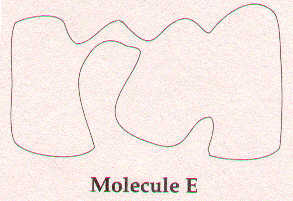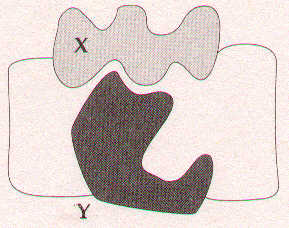What Goes On in the Cytoplasm
Thousands and thousands of different chemical reactions
take place in the cytoplasm.
Here's an example of a
very generic chemical reaction:

In the above reaction, molecules X and Y are the reactants
and molecule Z is the product. However, the reaction
won't happen unless X and Y get together.
X and Y need a mutual "friend" that will help them
get together in the same place at the same time so they
can react and form Z. The mutual friend is an enzyme.
Here's a picture of an enzyme that would work nicely
to get X and Y together.

We'll call the enzyme molecule E. If E is around, the
reaction between X and Y occurs much more quickly than
if E is not around. We call E a catalyst. Catalysts
simply make chemical reactions occur faster. E's job
is to catalyse the reaction between X and Y.
Notice that the spaces on the top of molecule E match
up with molecule X's shape. The spaces on the bottom
match up with molecule Y's shape.

So if molecule E is floating around in the cytoplasm
of a cell, X and Y have a good chance of getting together.
Once they do, they react to form molecule Z.

When the reaction is finished, molecule E is still
around, and is unchanged. It's now free to go and find
another pair of X and Y to catalyse another reaction
between them. So here's the first important fact to
remember about an enzyme:
When an enzyme catalyses a reaction, it is not
used up in the reaction.
|

